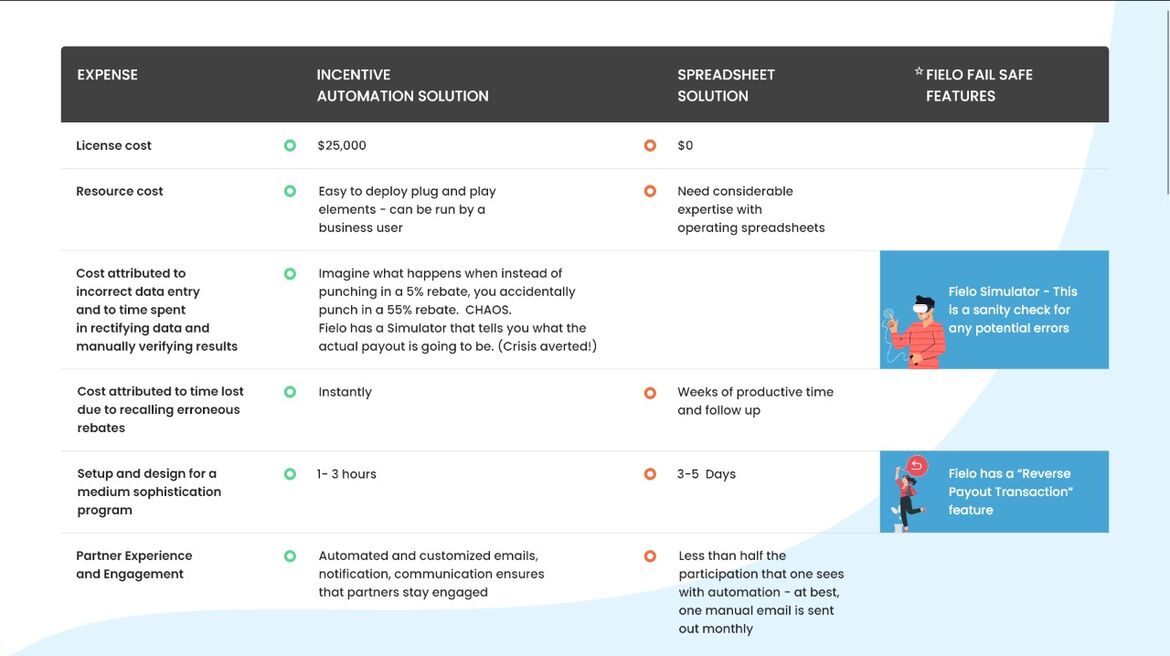As a loyalty/incentive program manager using spreadsheets, you are losing so much
(engagement, time, and money!)
We’re not the first to say this – the spreadsheet has no place in the efficient business workflow.
While they offer unmatched flexibility of setting up data for free, your operational costs to simply manage these spreadsheets tell a different story.
But spreadsheets aren’t really free, are they?
Scale-savvy organizations know this – for anything that’s business-critical, companies are moving to business platform solutions. These applications are designed not just to store data, but also to structure your process flow and audience segmentation, and convert the data your customers and partners are generating into insights.
When it comes to business-critical activities, customer and partner loyalty top the list – and that’s the case we’ll use.
For example – Fielo has a simple point-and-click interface that helps you structure your Loyalty/Incentive Program in six steps. Running an incentive program on spreadsheets is downright scary.
Imagine how tedious it would be to enter the exact same details for the thousands of partners that you work with, or the millions of customers you want to engage. From setting up behaviors to rules to rewards – it is a hugely manual task and highly error-prone. We have all been guilty of pasting incorrect information into those endless cells. This could lead to serious errors which, in the case of Loyalty/Incentive Programs, can cost millions of dollars. 🌟 (Fielo has a fail-safe for this – keep reading.)
Also, the volume of processing work – every incentive behavior rule that you paste into a cell is another API call to your CRM. Can you imagine what your CPU is going to be doing for the rest of the day?
What are some of the other benefits of adopting automation?
- Easier analytics and intuitive reporting
- One-click dashboards – set up your analytics dashboard in seconds
- Customizable – drag and drop elements – see how seemingly unrelated factors affect each other
- Limited reliability on an individual’s access privileges – anybody can view at any time and run it as per their preferences.
- Data security
- Ensures that data is secure and not misused – of especially critical value if using large spreadsheets that contain customer or partner details
- Reduces the possibilities of data manipulation
- Many incentive automation tools have pre-built models and templates that are deployable as it is (see Fielo’s QuickStart)
What are some of the biggest wins – that is not so evident?
- Saves time and saves resource costs (no need for a data entry resource)
- Reduces the time lag between data interpretation and data-driven decision making
- No draconian loading times and copy-paste of formula and macros across sheets





